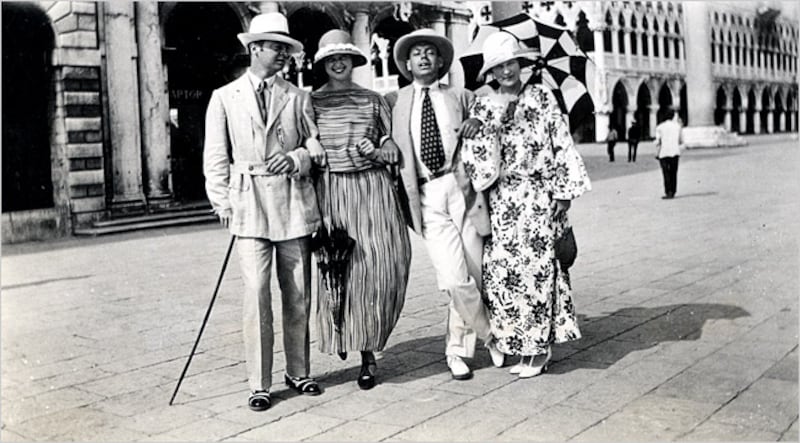The images conjured up by the phrase "summer on the French Riviera in the 1920s" still pack a strong cultural punch. They turn up in everything from the TV mini-series Riviera – currently approaching its nefarious climax on Sky Atlantic – to Hitchcock's To Catch A Thief, as well as more murder mysteries than you could shake a gold-tipped walking stick at. When Agatha Christie assembles her cast of sunbathing beauties, there are always a couple of effortlessly glamorous, ultra-wealthy Americans somewhere in the mix.
The man who actually started all this was an Irish-American businessman and artist called Gerald Murphy. From the summer of 1923 onwards, Murphy and his wife Sara reinvented the Riviera, throwing lavish parties at their summer house, Villa America. A snappy dresser, Murphy effectively created the “casual” Cap d’Antibes uniform of striped sailor jersey, espadrilles and knitted fisherman’s cap. Sara liked to wear a long rope of pearls with her bathing suit.
The pair are also credited with inventing the word “sunbathing”, inviting a flock of exotic friends – among them Ernest Hemingway, Pablo Picasso, Dorothy Parker, and F Scott and Zelda Fitzgerald – to join them for picnics on the beach at La Garoupe.

"At that time no one ever went near the Riviera in summer," Murphy would later tell a journalist from the New Yorker magazine. "The English and Germans – there were no longer any Russians – who came down for the short spring season closed their villas as soon as it began to get warm. None of them ever went in the water, you see. We dug out a corner of the beach and bathed there and sat in the sun, and we decided that this was where we wanted to be."
Irish immigrant parents
The Murphys had come a long way in just two generations. Gerald Murphy’s father, Patrick Francis Murphy, was one of 13 children of Irish immigrant parents. Born around 1855, he made a fortune making and selling luxury leather goods.
By the Roaring Twenties, Gerald and Sara were at the centre of a glittering, hard-drinking intellectual circle, and found themselves celebrated in literature and art. They were the models for Dick and Nicole Diver in F Scott Fitzgerald's novel Tender is the Night. Their beautiful young sons were photographed by the legendary Lee Miller. Picasso did five paintings of the lovely Sara. Gerald, too, was a decent painter in the modernist style – several of his works are to be found in the permanent collection at the Museum of Modern Art in New York.
These relationships weren't always sunny. Ernest Hemingway, to whom the Murphys were hugely generous both financially and personally, would savage them in his bitter memoir A Moveable Feast. The couple were not happy about the way they were portrayed in Fitzgerald's novel, either – though to their credit, they continued to support him through his years of alcoholism and depression.
Wall Street Crash
In the summer of 1929, the Murphys’ dazzling European sojourn came to a brutal end when their son Patrick was diagnosed with TB. Meanwhile, back in the US, the Wall Street Crash hit the family business hard. The couple brought Patrick to Switzerland, hoping for a cure. In 1925, however, the elder Murphy son, Baoth, died suddenly from meningitis. Patrick died two years later. Neither boy had made it past the age of 16.
The Riviera idyll was over. Gerald returned to New York to manage the business but never painted again. His total production was just eight paintings. Then again, according to those who knew him, Gerald Murphy’s life was in itself a work of art.
In her hugely readable portrait of the Murphys, Villa America, the American novelist Liza Klaussman mixes fact with fiction, real-life details with flights of fancy. But it's F Scott Fitzgerald – for all his faults – who captures the essence of it. When he heard of Patrick's death he wrote to the Murphys: "Dearest Sara and Gerald, The telegram came today and the whole afternoon was so sad with thoughts of you and the past and the happy times we once had." The letter ends: "The golden bowl is broken indeed, but it was golden..."
A golden Irishman? Now there’s a sight which would transform any beach into the Riviera.
If you know of an Irish connection that would interest readers of this column, please email awallace@irishtimes.com with details of the story, as well as your contact address.












